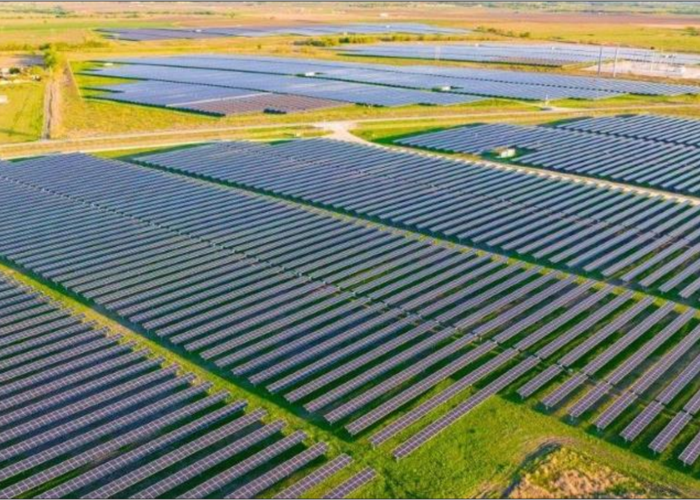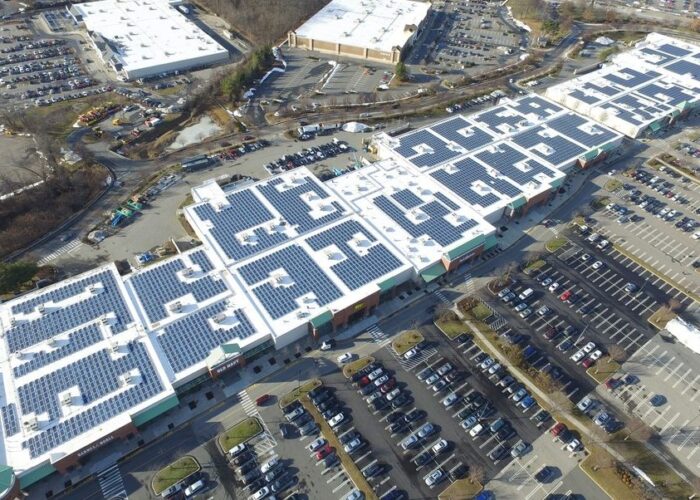The start of the first attempt to fly around the world powered by solar energy is now just two weeks away, starting in the United Arab Emirates, with the flight’s control centre revealed to be in Monaco.
At the official opening on Tuesday, Prince Albert II of Monaco and the two Swiss pilots, Bertrand Piccard and André Borschberg , said the Mission Control Center (MCC) of the Solar Impulse project is already operational.
Try Premium for just $1
- Full premium access for the first month at only $1
- Converts to an annual rate after 30 days unless cancelled
- Cancel anytime during the trial period
Premium Benefits
- Expert industry analysis and interviews
- Digital access to PV Tech Power journal
- Exclusive event discounts
Or get the full Premium subscription right away
Or continue reading this article for free
The French principality will host a 40-strong team at the MCC, which will be used to collect data and direct operations as Solar Impulse 2 makes its way around the equator, taking in a 35,000km route. This will include assessing the levels of charge in the aircraft’s batteries as it flies.
Solar Impulse 2 will make 12 stops, taking off from the UAE’s capital Abu Dhabi, flying for a total of 25 days which will be spread out over five months. As might be expected, the precise details of the route will depend to some extent on weather conditions – the journey is expected to start in 15 days time but may vary slightly, while the location of a stop in the Midwestern United States will be decided during the flight, for example.
After the plane takes off in Abu Dhabi, it will make its fuel-free way to stops in Oman, India, Myanmar and China, before crossing the Pacific to Hawaii. From there the flight travels across the USA, with stops in Arizona and New York and the yet-to-be-determined Midwestern stop. After an Atlantic crossing, the last stopover before Solar Impulse 2 returns to Abu Dhabi will either be in southern Europe or North Africa.
According to the team behind the project, preparation has taken 12 years, including feasibility studies as well as design and construction of the plane. Solar Impulse 2 follows the original prototype plane, Solar Impulse 1, which undertook a number of test flights. Main partners behind the project are Solvay, ABB, escalator and elevator manufacturer Schindler and Swiss watch maker Omega. Other partners to the project include Google, materials specialist Bayer Material Science, Swiss Re Corporate Solutions and luxury drink brand Moët Hennessy. UAE solar company Masdar is the hosting partner for the Abu Dhabi take-off and landing centre.
The new carbon fibre plane features 17,248 solar cells with a 72 metre wingspan, longer even than the 59.6 metres of a Boeing 747’s wings. Weighing just over two tonnes (2,300 kg) with a single-seat, unpressurised cockpit, Solar Impulse 2 can fly at speeds of between around 50 and 100 km per hour. The craft is equipped with four lithium batteries which charge during the day to power night-time flying. This last aspect will be particularly important – as pilot Borschberg pointed out, the planned route will include flying for five days and nights consecutively.
Monaco was apparently chosen due to a long-standing friendship between Piccard and Prince Albert II. Piccard hailed the monarch’s advocacy for clean energy, describing the prince as “one of the only heads of state to champion environmental protection at all political discussions”.
As well as being a story of adventure and the pitting of human wit against technical constraint, the flight is also intended to serve a campaigning purpose for clean energy. At each stop, the project’s team, led by Piccard and his colleague and Solar Impulse co-founder Borschberg, will organise events including visits to see the plane and online Google Hangouts to engage young people and other members of the public on the mission and its clean energy message.






